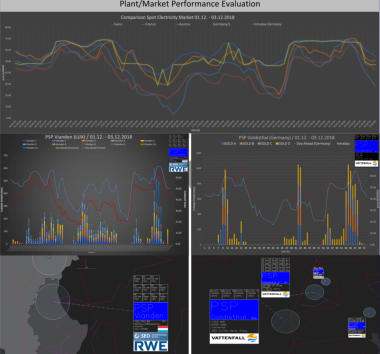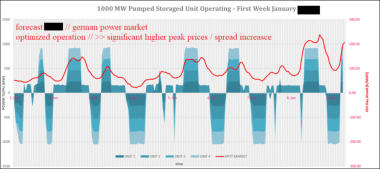




© REESSA Consulting UG (haftungsbeschränkt) 2019
IMPRINT

Pumped-Storage Plants (PSP)
Proven Technology with New Tasks
The commercial operation of large-scale pumped storage power plants began as early as the 1930s. The oldest pumped storage power plants have thus been in operation for over 80 years. The energy storage facilities were built to optimize the operation of conventional power station racks and to limit the number of peak-load power stations. In addition to their function as energy buffers, they contribute significantly to system stability, system optimization and system safety. In the event of a power failure of large power grids, a large part of the PSP is able to reestablish grid operation due to its black start capability. With a future share of renewable energies of more than 50%, the demands on technology and operation will change. REESSA Consulting advises on new construction planning, modernization and expansion of pumped storage power plants. Detailed market analysis and market forecast are important basic analyses to determine the optimal design of the plants. The aim of our work is to achieve a positive investment forecast over the entire project duration.
Renewables Energies
Energy Storage
Simulations & Analytics

Range of Services
• Feasibility Studies • Concept and Design for PSP Projects • Evaluation of Capacity Expansions • Evaluation of Service Enhancements • Economic Feasibility Studies • Market Analyses • Market Forecasts • Market Simulations for Energy Storage Systems • Impact of Renewable Energies on the future operation of PSP • Control Energy (PRIM/SEC/MIN) • Virtual pumped storage power plant • Hydraulic Short Circuit • Pump Turbine Design • Underground Pumped Storage Plants • PSP Circular Dam Storage Concept • Small Pumped Storage Systems • Evaluation of investment decisions

After difficult economic years, the European market for pumped storage power plants will recover
significantly over the next few years
Crisis in Pumped Storage Power Plant Operation
Over a period of 10 years (2006 - 2016), the profitability of PSP in Central Europe declined. The main reasons for this were overcapacities in peak-load and baseload power plants due to the changeover of the electricity market. Exchange electricity prices fell continuously between 2008 and 2016, and with them the price spread necessary for the profitable operation of energy storage facilities. The prices on the control energy market, which were still high at the beginning of the 2000s, have also been at an all-time low for several years. As a result, systems with low efficiencies could no longer be operated economically. A famous example of this is the PSW Niederwartha near Dresden. The PSW Niederwartha had to cease commercial operation in 2016 and has been in so-called transitional operation since then. All new building projects of the last years were stopped and important investments in existing plants were not made. The pumped storage crisis reached its peak in 2016 with an average price spread of less than € 20 per megawatt hour (8h storage operation).The Future of Pumped Storage Technology
The cost-effectiveness of the existing pumped storage power plants will be much more positive in the coming years. Existing plants will be able to benefit and should adapt to the new requirements in operation. Based on the positive economic forecasts for pumped storage facilities, it is assumed that work on existing concept plans for new construction projects will be resumed in the coming years. REESSA Consulting supports operators and investors in the planning of new pumped storage power plants with technical and economic issues.

PSP are important players in the European electricity grid



Analysis and revenue forecast models of a PSW model power
plant
Operation and day-ahead electricity price 2018
Day-ahead forecast with ideal machine operation
Detailed technical market analyses form the basis for our
profitability analyses
PUMPED STORAGE





PUMPED STORAGE


